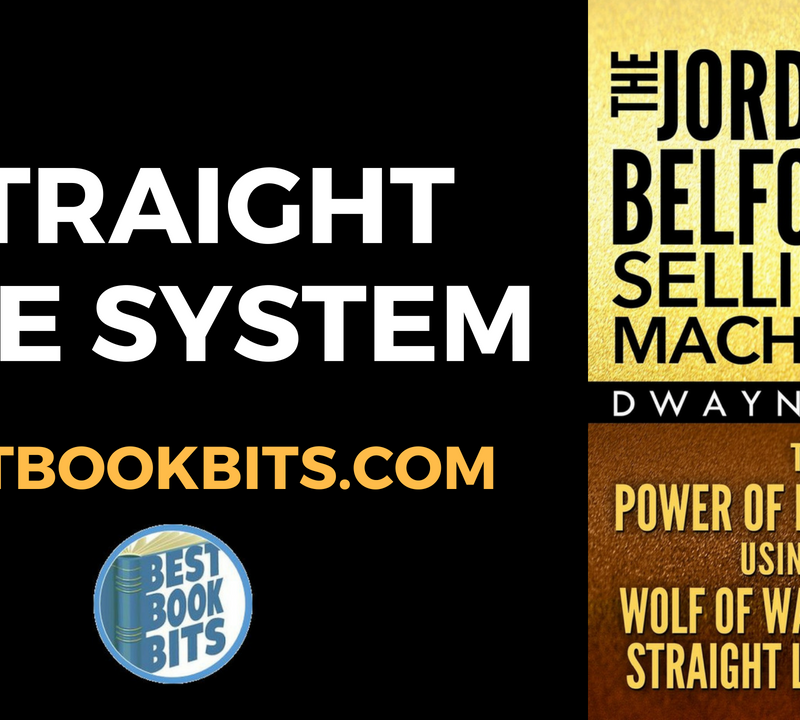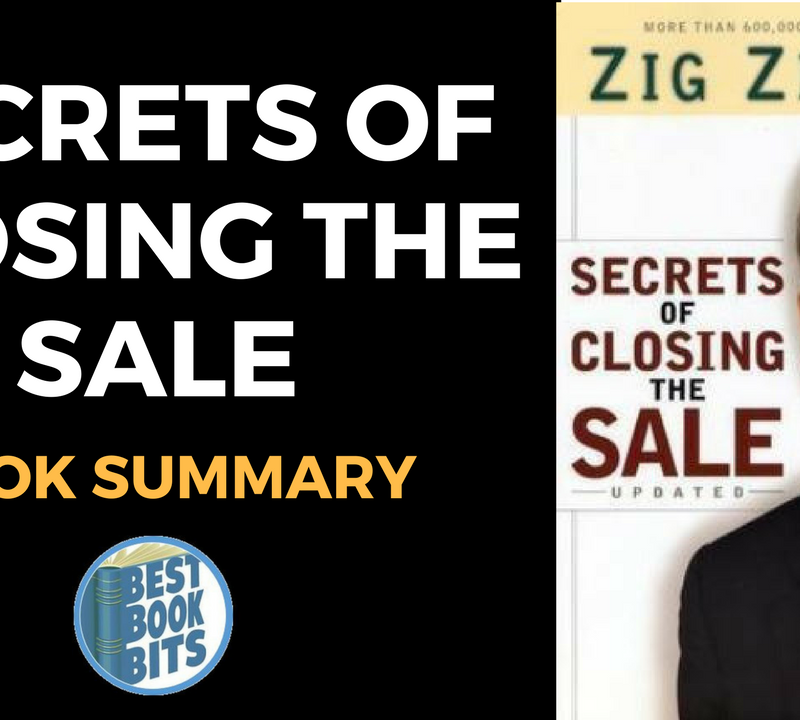★DOWNLOAD THIS FREE PDF SUMMARY HERE
? MY FREE BOOK TO LIVING YOUR DREAM LIFE”
? SPONSOR BESTBOOKBITS BY USING PATREON
? SUPPORT BESTBOOKBITS BY CLICKING THE LINKS BELOW
- 150 PDF Summaries
- Coaching Program
- Subscribe to My Channel
- Website
- Spotify
- Book Club
- Mailing List
- Research shows that you cannot earn more than 10% above or below what you expect to earn. To increase your sales, expand your self-concept to accommodate an expectation of reaching higher sales goals. By extension, the higher your self-esteem the better your sales performance.
- “Fear of rejection” and “fear of failure” are the two primary obstacles to making a sale. To cope with it without giving up, you will need a strong self-esteem and realize that sales rejection is not personal.
- Set goals and then visualize yourself achieving them from a third-party point-of-view [Personal insight: make sure you keep a relaxed attitude when you do this exercise, and if you tense up, correct it]
- People make purchases based on emotion and rationalize their decisions with logic. The two primary motivations for making – or not making – a purchase are “desire for gain and fear of loss.” The desire for gain is a quest for an improvement of some kind [Personal insight: a quest to make one’s “actual self” to reach an “ideal self”]. The fear of loss crops up when prospects worry about making a mistake or getting stuck with goods or services they don’t really want.
- Ask questions to understand your prospect’s needs. Popular human needs are: money, security, being liked, status and prestige, health and fitness, praise and recognition, leading the field, love and companionship, personal growth, personal transformation, power, influence and popularity. Then convince your prospect that your product or service fulfills these needs better than anything else.
- The six most important words in selling are: “Spend more time with better prospects.” Ask questions at the beginning of your presentation that uncover whether the person is a prospective customer. Observe the prospecting methods that your company’s top salespeople use and apply them to your own practice.
- When you are talking about your product or service, your prospect is having an internal discussion where he’s asking, in order of importance: “What’s in it for me?” then “what will it cost?”, “what will I gain as a consequence?”, “when will this outcome actually happen?” and “what guarantee are you offering?”.
- List your product’s 10 most appealing characteristics. Then, determine why someone wants to buy it from your company and from you, personally. Identify your “unique selling proposition,” the feature that differentiates your product.
- The four elements of strategic selling are “specialization, differentiation, segmentation and concentration.” Determine what specific benefits your product offers. Differentiate it from the competition, when possible, in terms of price, quality or even the strength of your personality. Segmentation means finding the group that is naturally disposed to want your product. Concentrate on the prospects who are likeliest to give you the highest return.
- “Refuse to talk about your product or service, or the price, on the phone; focus single-mindedly on getting a face- to-face meeting, nothing more.”
- To begin your sales meeting, use an opening inquiry or statement that elicits the response, “Really? How do you do that?”. For example, Corning Glass’s strong opening statement is, “We can provide you with glass that doesn’t shatter.”
- When you meet one-to-one with potential customers, you need to clarify 5 points: assure them you have something important to say, confirm that you are talking to the appropriate person, reassure them that the meeting will be brief, make sure they understand that they are under no obligation to make a purchase, and finally, tell them you will not use high-pressure sales techniques.
- “When you are selling in the home…never make a sales presentation in the living room. People do not make important… decisions in the living room; they make them in the kitchen or at the dining room table.” [Personal insight: I’d even add that the difference lies between “effective decisions” in contrast to “simple discussions”]
- Encountering resistance is normal. To neutralize sales resistance, tell your prospects that you understand the issue behind their resistance and counter with social proof (such as existing clients, testimonials, referrals or recommendations). Then, reiterate the crucial benefit of your product or service.
- “Everyone is busy. For this reason, you should always expect initial sales resistance, even if you are offering the very best product at the very best price to the most qualified prospect in the world.”
- Discover your prospect’s “hot button” (the benefit your client finds the most interesting) and focus your presentation on it. Describe potential measurable results, such as a N% increase in sales, and if possible, guarantee the results with offers of rebates or refunds.
- The discussion of price often happens after the client agrees to buy. As a rule of thumb, delay any discussion of price until the close of your presentation.
- Approach close: you ask the client to make a decision after your presentation. For example, your beginning question could be: “Please tell me at the end of our conversation whether or not this product makes sense to you.” You are asking the prospect to listen with an open mind, and to give you an answer after he or she has heard about your product or service.
- Demonstration close: you begin the meeting by asking the clients if they will make a purchase if you can demonstrate the key benefit of your product. For example, your beginning question could be: “Mr. Doe, if I could show you the best investment available on the market today, are you in a position to invest $10,000 right now?”
- Power-of-suggestion close: you conduct your conversation based on the assumption that the customer has already made the buy. For example, you could say something along the lines of: “You’re going to love the customer support you get.”
★DOWNLOAD THIS FREE PDF SUMMARY HERE
? MY FREE BOOK TO LIVING YOUR DREAM LIFE”
? SPONSOR BESTBOOKBITS BY USING PATREON
? SUPPORT BESTBOOKBITS BY CLICKING THE LINKS BELOW













